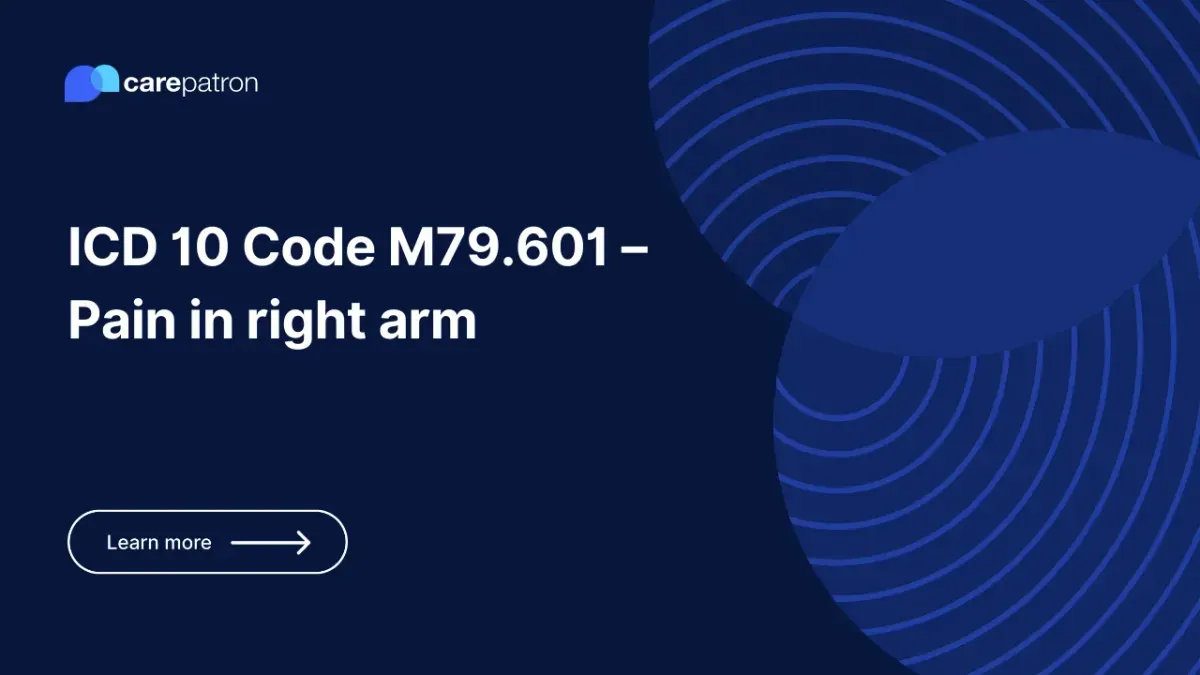
M79.601 – Pain in right arm
Learn about the ICD 10 code M79.601 - Pain in right arm through this short guide.
Use Code
Commonly asked questions
Pain in the right arm can have various causes, including musculoskeletal conditions (such as tendonitis and fractures), nerve-related conditions (such as pinched nerves), vascular disorders, or overuse/repetitive strain injuries.
Symptoms can vary but commonly include discomfort, soreness, numbness, tingling, weakness, or restricted range of motion in the right arm. The pain may be sharp, throbbing, or aching in nature.
Diagnosis involves a comprehensive medical history, physical examination, and potential imaging studies or nerve conduction studies to determine the underlying cause of the arm pain.
EHR and practice management software
Get started for free
*No credit card required
Free
$0/usd
Unlimited clients
Telehealth
1GB of storage
Client portal text
Automated billing and online payments
